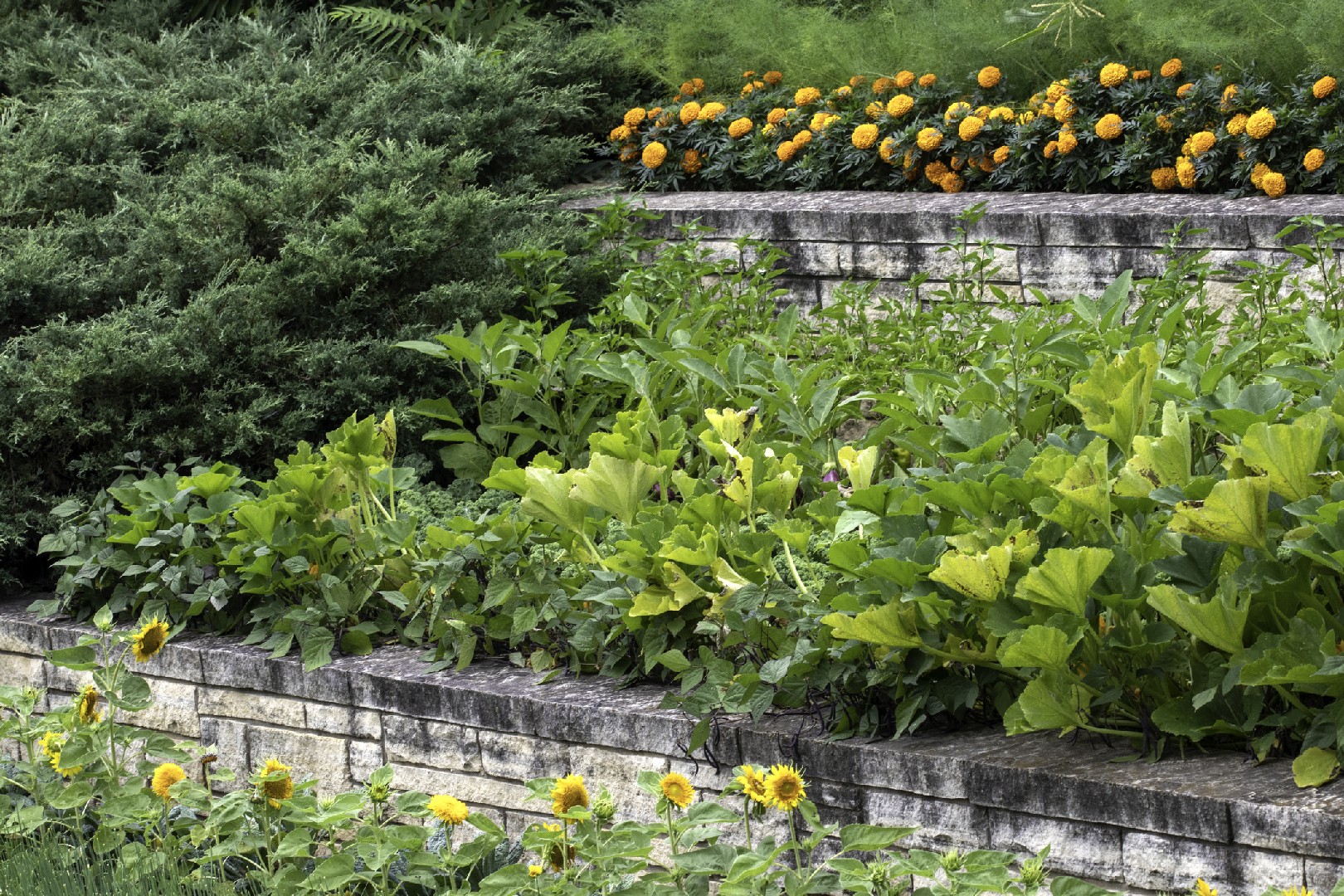![Rectangle]()
Thriving Tiers: Plant Selection and Care for Your Terraced Garden
Plant selection is a crucial aspect of creating a thriving terraced garden. The plants you choose will determine not only the visual appeal of your garden but also its overall health and sustainability. In this section, we will explore the best plants for terraced gardens, taking into consideration factors such as sun exposure, soil quality, and plant selection.
When selecting plants for your terraced garden, it is important to consider the amount of sun exposure each tier receives. Different plants have different light requirements, so it's essential to choose plants that are suitable for the amount of sunlight your garden receives. For example, if your terraced garden is in a sunny location, you may consider planting sun-loving plants such as roses, lavender, or succulents. On the other hand, if your garden is in a shady area, you can opt for shade-loving plants like ferns, hostas, or impatiens. By selecting plants that are well-adapted to the sun exposure in each tier, you can ensure that they will thrive and contribute to the overall beauty of your garden.
Another important factor to consider is soil quality. Terraced gardens often have different soil conditions in each tier due to differences in drainage and erosion. Some plants may thrive in well-drained soil, while others may require more moisture. Before planting, it's essential to assess the soil conditions in each tier and choose plants that are suitable for those conditions. If you have heavy clay soil, for example, you may need to amend it with organic matter to improve drainage. On the other hand, if you have sandy soil that quickly drains water, you might need to choose plants that can tolerate drought conditions. By choosing plants that are compatible with the soil conditions in each tier, you can ensure their success and minimize the risk of plant stress or failure.
Once you have selected the appropriate plants for your terraced garden, it's important to know how to care for them to ensure their thriving growth. Proper soil treatment is crucial for plant health and vitality. Regularly testing the pH level of the soil can help you determine its acidity or alkalinity, and make adjustments if necessary. Adding organic matter, such as compost or well-rotted manure, can improve soil fertility and structure. Additionally, applying a layer of mulch to the surface of the soil can help retain moisture, suppress weeds, and regulate soil temperature.
Watering is another vital aspect of plant care in terraced gardens. The water needs of plants can vary depending on their species, environmental conditions, and stage of growth. It's important to water plants deeply and infrequently, allowing the soil to dry slightly between watering. This promotes the development of deep roots and helps prevent waterlogged soil, which can lead to root rot. Regularly monitoring soil moisture levels and adjusting your watering schedule accordingly is essential for plant health.
Lastly, preventing erosion is crucial for maintaining the integrity of your terraced garden. The tiers of a terraced garden can be susceptible to erosion, especially during heavy rain or wind. To prevent erosion, consider adding erosion control measures such as retaining walls, terraces made of rocks or timbers, or planting ground-cover plants with strong root systems. These measures can help stabilize the soil and prevent it from washing away during heavy rainfall.
In addition to the methods mentioned above, there are extra tips you can follow to maximize the visual appeal of your terraced garden. Consider incorporating a variety of plant heights, colors, and textures to create visual interest. Grouping plants with similar water and light requirements together can also help ensure their optimal growth. Furthermore, adding decorative elements such as garden ornaments, seating areas, or water features can enhance the overall aesthetics of your terraced garden.
By carefully selecting plants that are well-suited for your terraced garden's sun exposure and soil conditions, and providing them with proper care and maintenance, you can create a beautiful and thriving garden. Remember to regularly assess and adjust your plant selection and care practices as your garden evolves over time. With patience, dedication, and a little bit of knowledge, your terraced garden will become a stunning oasis that you can enjoy for years to come.





